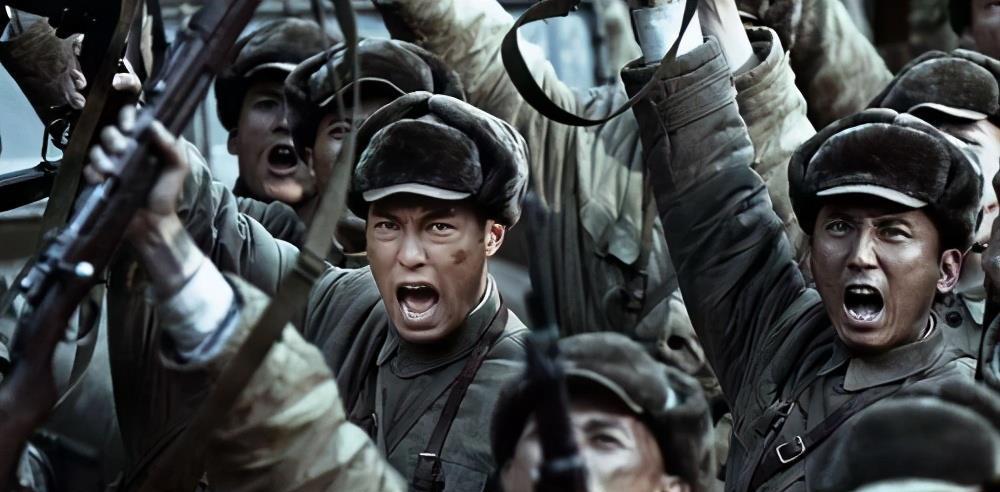The 38th Army of the Volunteer Army is the ace unit of our army, this unit is one of the three main forces of the Four Fields, in the second campaign to resist the United States and aid Korea, this unit defeated the South Korean Seventh Division, and then beat the Turkish Brigade to two companies, and finally in the three houses, Longyuanli blocked the main force of the US army, and severely damaged the US Second Division. The 38th Army also fought because of this and was known as the Banzai Army.

The 38th Army is also a long-established unit, which is a part of the Red Third Army of the Peng Dehuai Pingjiang Uprising, with brilliant records. In 1952, Jiang Yonghua was promoted to commander of the 38th Army, leading the 38th Army and the 42nd Army to change defenses, and at that time, the 38th Army was facing the Han 9th Division stationed at Baima Mountain. White Horse Mountain is located in the Yaoshan Cave area 10 kilometers northwest of Tieyuan, from northwest to southeast, about 3 kilometers long, composed of a group of mountains dominated by 394.8 highlands, the main highlands are 394.8 highlands and 281.2 highlands, which are also the main positions held by the ROK 9th Division, facing the 38th Army's Xiangli Beishan position.
The strategic location of Hakuba Mountain is very important, and the south is the main military supply line of the United Nations Army to Seoul through Gaotai Mountain and Baogai Ridge, which can directly reach the important military station base of the United Nations Army, Chewon. After the 38th Army changed its defenses, it set its sights on the strategic point of White Horse Mountain, and the headquarters of the Volunteer Army ordered the 38th Army to prepare to attack the positions held by the Ninth Division of the Korean Army on White Horse Mountain and occupy White Horse Mountain. In order to occupy this place, the 339th Regiment and the 340th Regiment of the 114th Division of the 38th Army, which were the main offensive tasks, conducted six weeks of pre-war training. In this battle, 183 cannons, 17 tanks, and 122 anti-aircraft machine guns were also mobilized for air combat, and it can be said that except for aircraft, everything was available.
At the critical moment when the troops were ready, Tanaka Jiao, a cultural instructor of the 7th Company of the 340th Regiment, surrendered to the enemy, and when he was reconnaissance in advance, he quietly touched the ROK position from the forward position, and when he surrendered to the enemy, he also brought with him the battle plan of the 38th Army. The Han Ninth Division immediately reorganized and deployed, and also transferred two tank companies with reinforcements of 44 tanks and 10 artillery battalions, and a tank battalion of the US army also came to reinforce; the ROK army increased the barbed wire in front of the position from three to seven, and also set up a large number of anti-infantry mines, anti-tank mines, illumination mines, and napalm mines.
On October 3, 1952, the U.S. Military dispatched a large number of bombers to bomb the location of the volunteer artillery positions provided by Tanaka Jiao, and the U.S. Third Division also assembled urgently to prepare for reinforcements of Hakuba Mountain. At that time, the 38th Army proposed to change the battle plan, but it was vetoed by the superior officer Wang Jinshan, and on the evening of October 5, the 340th Regiment of the 114th Division of the 38th Army sent 6 companies of about 800 commandos to lurk in the front of the enemy position in the middle of the night according to the original plan.
In the early morning of October 6, the various units of the Volunteer Army launched an attack, but due to the increase in the number of Troops in the Rok and American Troops, the 342nd Regiment of the 38th Army of the Volunteer Army and the 334th Regiment of the 112th Division also participated in the battle, and the strength of the attack increased to 15,000 people. In order to support the ROK army in combat, the US Air Force dispatched hundreds of aircraft to bombard the volunteer army's attacking troops, rear supply lines, and rear artillery positions, causing no small casualties to the volunteers. In the early morning of October 15, due to excessive casualties, the volunteers had to withdraw from the Baima Mountain area, and the focus of the two sides shifted to the Shangganling area. In the Battle of Baima Mountain, the 38th Army of the Volunteer Army suffered 6,800 casualties and the Rok army suffered more than 4,000 casualties.